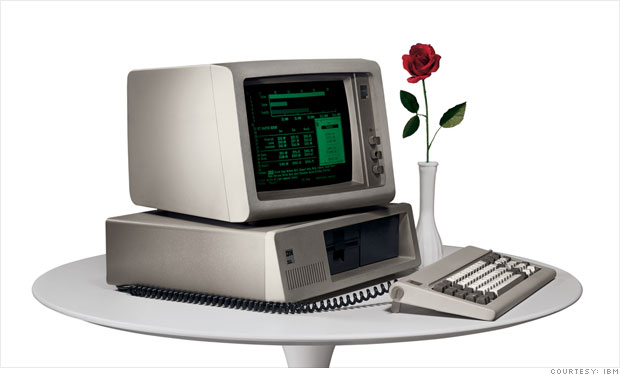How Far We’ve Come Since the IBM PC was introduced in 1981
As we approach Christmas and the New Year, thinking of family, reflecting on the past, and anticipating the future, I thought you’d get a kick out of this 1984 Christmas commercial of an IBM PC, as well as my personal reflections of its history.
I bought one of the original IBM PCs in August 1981 for about $5,000. With inflation, that would be over $16,000 in 2023. The only way I could afford it was because I got an IBM employee discount with payments taken out of my monthly pay check. And with that help, I ordered a full-blown system.
- 4.77 MHz processor, maxed out 64K RAM,
- not one but two 120KB diskette drives (instead of using a cassette tape recorder),
- monochrome display (versus connecting to TV),
- 300 bps telephone modem (not Kbps, Mbps or Gbps),
- IBM DOS 1.0,
- BASIC,
- EasyWriter word processor,
- VisiCalc spreadsheet,
- Asynchronous Communications Program, and
- Early Games (a kids game for my son, Adrian).
I started Adrian on the PC at age 2, sitting him on my lap and using a piece of cardboard to mask off most of the keyboard so only the number keypad was visible. Early Games started by teaching the shapes of numbers — a 3 looks like an 8 but with its loops open on the left, and a 5 looks like an upside-down 2. Today Adrian is 39, and he has two kids of his own.
Kids these days start using smartphones and tablet computers at even earlier ages. And our elderly parents age 82 and over can also use them, as discussed in An iPad for All Ages.
Oh by the way, even my Philips Sonicare toothbrush has an embedded microprocessor that’s faster than that the original IBM PC – much faster. It’s actually ten times faster than the $3.5 million IBM mainframe I worked on in the mid-1970’s. The iPhone SE I carry in my pocket is about 1,800 times faster than the mainframe. And, my Apple iBook Air, with M2 processor, has a 16-core dedicated neural engine capable of executing 15.8 trillion operations per second. That’s over 15 million times faster than the mainframe that once supported the nation’s largest hospitals with hundreds of simultaneous units, and it’s all mine.
I find it amazing that all of us can have that much computing power in our pockets, or on our wrists, with wireless Internet access to the world. How time flies — exponentially, according to Moore’s Law.
ABOUT THE AUTHOR
Wayne Caswell is a retired IBM technologist, futurist, market strategist, consumer advocate, sleep economist, and founding editor of Modern Health Talk. With international leadership experience developing wireless networks, sensors, and smart home technologies, he’s been an advocate for Big Broadband and fiber-to-the-home while also enjoying success lobbying for consumers. Wayne leans left to support progressive policies but considers himself politically independent. (contact & BIO)



RELATED ARTICLES:
Your iPhone could handle 120 million moon missions at once (7/16/2010)